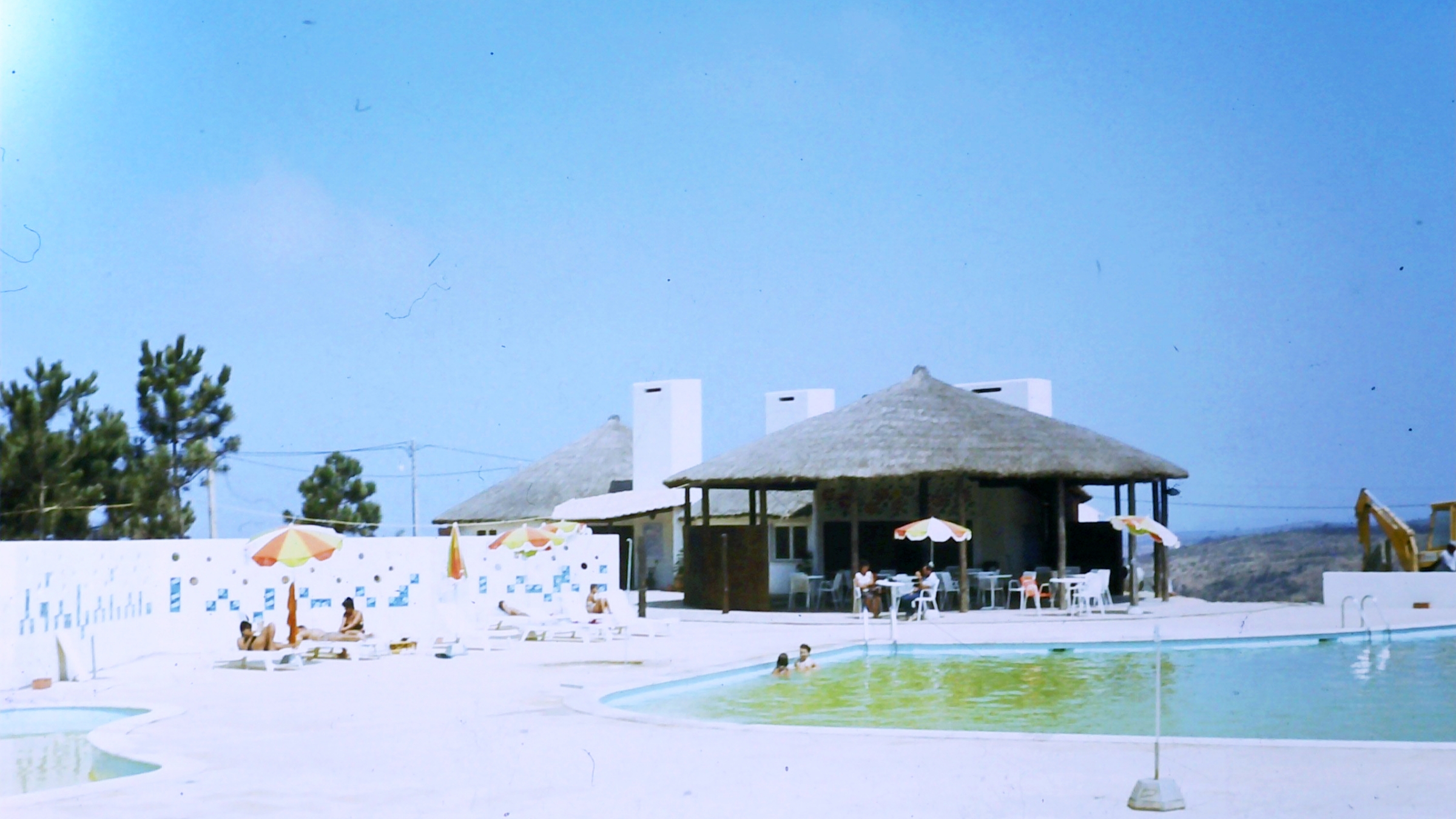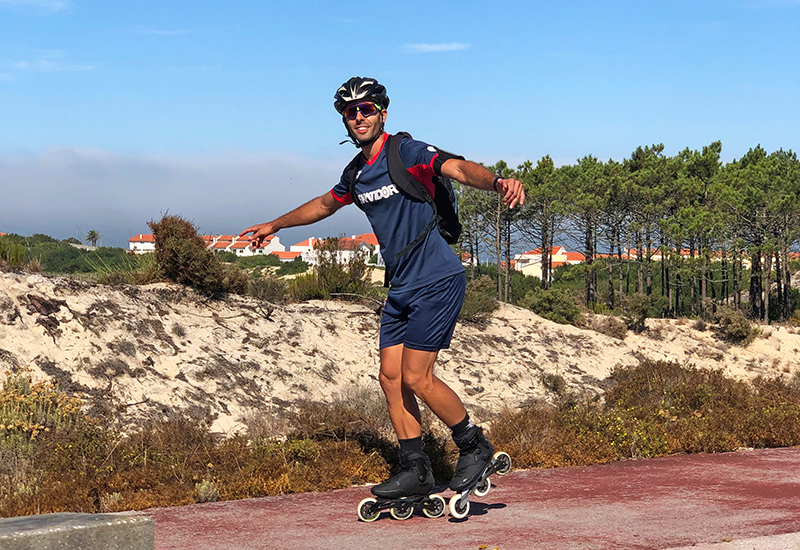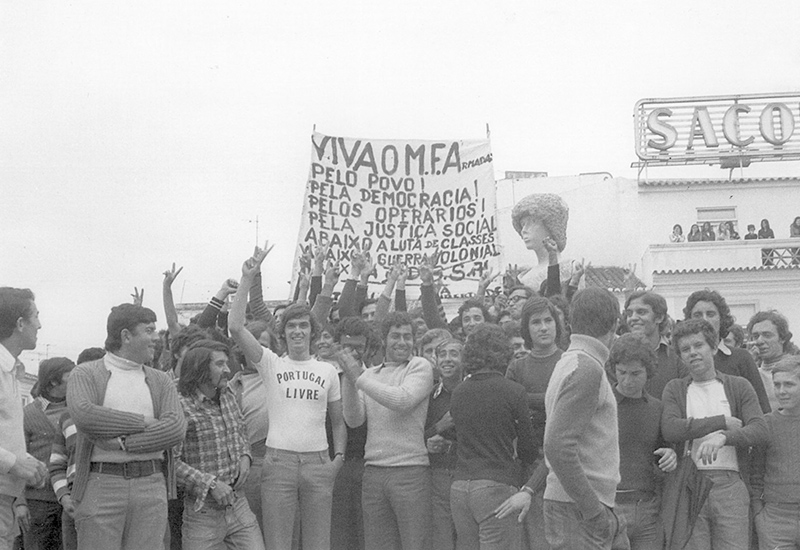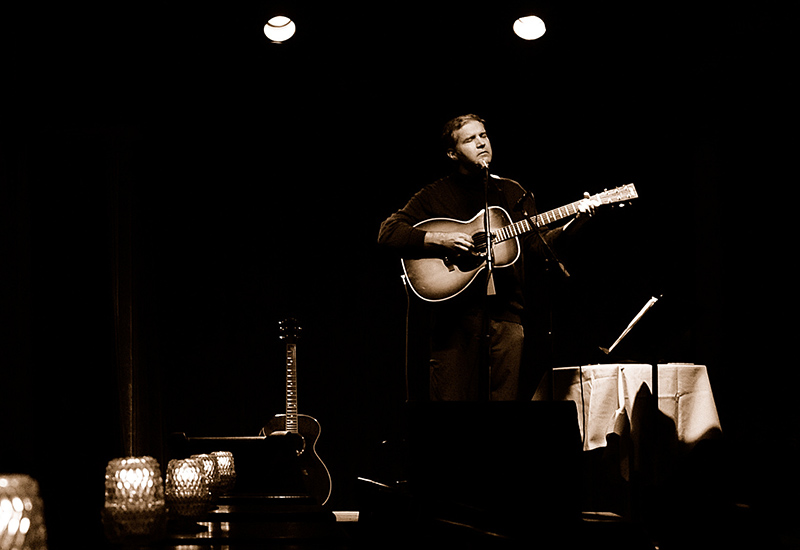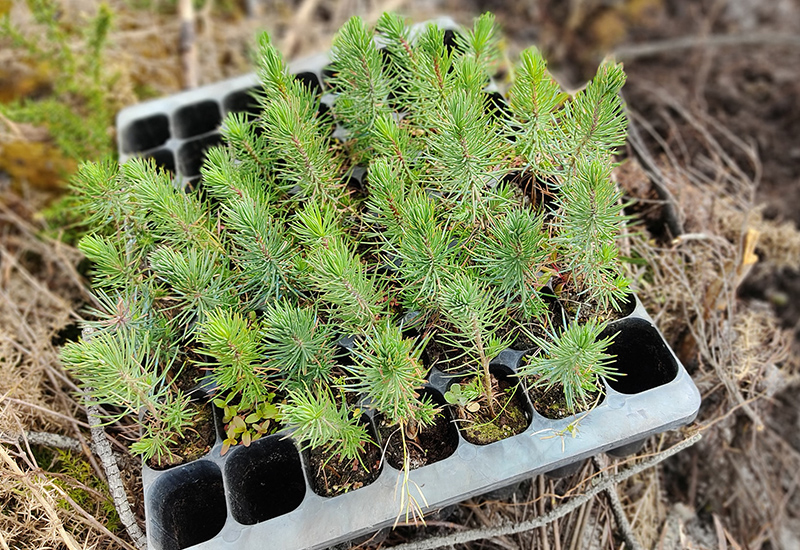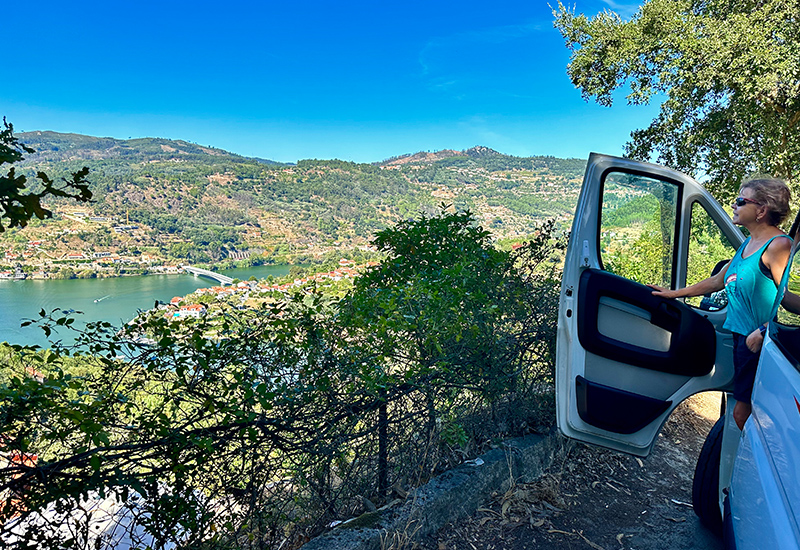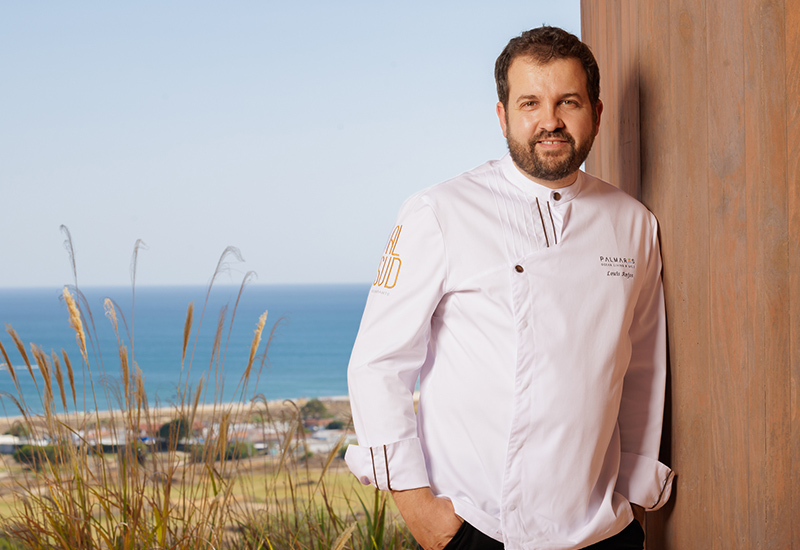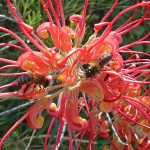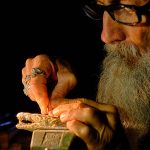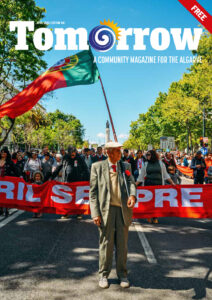The urbanisation of Vale da Telha, a beautiful place in Aljezur, has a short but controversial history. Resident Johan de Goed set out to collect memories about this place and find out more about its beginnings.
WORDS Johan de Goed
Idalino Serafim spent his youth in Vales, a small place near the urbanisation of Vale da Telha. He came from Estoril in 1974 to live near his parents, who had moved there. He says, “I remember that in 1974, Vale da Telha was the name of a property located near the present dam, also known as the lake.” He adds, “the dam was made to provide the houses of Vale da Telha with water. Vale da Telha was only connected to the mains supply about 25 years ago.”
When I talk with Idalino, who is now retired, I note that it is funny that Vale da Telha still doesn’t have any identification signs at the main entry. Only one sign of the company that created it, Somunid, marks the entry to the urbanisation.
Idalino Serafim recalls the Adega, a restaurant/bar with games and one or two billiard tables, almost totally made of wood, with the roof in colmo (thatch). This Adega was next to Hotel Vale da Telha, which still exists today. The Adega was totally destroyed in the big fire of 1993.

The urbanisation itself began to grow in 1977. According to the testimony of Idalino, I understand that in the beginning, the area was made very appealing in order to sell plots for building houses. Some of the buyers were successful. Others still regret it as even to this day, they are not allowed to build on the plot they purchased.
According to the initial plans for Vale da Telha, the urbanisation was to include a hunting and fishing club and an aerodrome next to sector E.
Idalino Serafim remembers groups of people coming by bus from Lisbon and elsewhere in Europe, including France and northern Portugal. “They came to explore the area with the hope of buying a house for holidays or for retirement,” he explains. “The Restaurante Vale da Telha was the place where many business deals were made. Restaurante Vale da Telha was once a luxury destination, with a huge area in front, a lake with fish and a cage with monkeys. It also had a beautiful and huge Borracheira (rubber tree) that was later cut down because it was damaging the road.”
Idalino also remembers a large area of tall pine trees, in Portuguese called the Pinhal Alto (old pine trees). Some of these pine trees can still be seen on the main roundabout of Vale da Telha by the Hotel. The area towards the coast was known as Pinhal Baixo (short pine trees area) and beyond that were the dunes or the medo. Idalino Serafim still remembers the man who planted the young pine trees. The Pinhal Baixo was burned in the fire of 1993.
At the Ribat of Arrifana (national monument), Serafim remembers the house of the Fiscal Guard (Guarda Fiscal). When the guards who lived there needed to go to Aljezur for supplies, they had to carry their bicycles as far as the roundabout by the hotel because the ‘road’ was too sandy for cycling.
After two coffees, I continue my journey down memory lane with Irish Helen Clarke, who is all smiles as she recalls the past. Helen came to Vale da Telha in 1989; she already had a few friends, some with holiday homes and some who were living in Vale da Telha. “At first, I didn’t really like Vale da Telha, but after friends took us to visit Praia da Rocha, which was so hot and so busy, I felt that Vale da Telha was paradise in comparison. Irish people are friendly like the Portuguese, so even though I didn’t speak the language, I felt very at home and the locals from Aljezur village were so tolerant with foreigners arriving and making themselves at home up the hill.”
Vale da Telha was much quieter in those days, so when Helen sat in the Restaurante Vale da Telha near the roundabout, they were alert to the traffic and people passing. “We used to call it the ‘magic roundabout.’ Arrifana was just a tiny village and when I arrived, it was mainly German people living there. Many of the roads in Aljezur were sandy and there were no supermarkets. If you were lucky, you would get meat on Wednesdays. We didn’t have mobile phones or landlines, so we had to go to the post office to make a phone call. It felt a bit like ‘ET Phone Home!’. There were no cash points, just banks. Power cuts were frequent as there was not enough electric provision for all the new houses in Vale da Telha, so we had to shop almost daily as we couldn’t buy and store lots of fresh food in case the power cut out on the fridge! We had the dream that we would move to a perfect house in Portugal, but I had no idea about humidity problems until we arrived here. We spent a lot of time in Café Primavera as between 1 pm and 3 pm the shops were closed for lunch, but it was a good daily routine!”

Helen and her friends would also frequent Taberna do Gabriel, which was situated in Vales (now, Taberna Gabriel II overlooks Praia da Amoreira.) During meals at the Taberna, they would start to learn Portuguese. “Important words, like cerveja (beer)! Gabriel had a big open fireplace and if you ordered prawns, they were cooked right there. The Taberna had mostly Portuguese male customers with some tourists. Sr Gabriel spoke English, but the more cerveja I drank, the more fluent my Portuguese became!”
Helen recalls a funny episode when she visited the market. “Once I went to buy eggs, I wanted six eggs (ovos,) but I asked for six uvas instead (grapes). The lady picked up six grapes from the fruit display to hand to me! Now many more people speak English, but in those days, I had to make a real effort to learn basic words for shopping and communication. Even when I try to speak in Portuguese, now I get answered in English.”
She also remembers the two fires, especially the big one on 23 July, 1993. At the time, Helen was in Aljezur with her son. At 11 am they could see the smoke of the fire from a distance. Wooden houses burnt and in particular, she remembers a Portuguese school teacher who not only lost the roof of her house but also, very sadly, her dog died too. During the fire, people gathered at the main roundabout of the Restaurante Vale da Telha as a safety measure. Some people also went to Monte Clérigo beach and to Arrifana beach to escape from the fire. Not only did residents take their dogs and cats to safety but also cows and other animals too. Helen remembers that in Arrifana the problem was when the high tide arrived, there was not much space left to stand. On one side the people had the fire, on the other, the sea! After this big fire, the then President of Portugal visited to talk with the people of Vale da Telha.
The electricity remained off for quite a few days, but Helen remembers that EDP worked very quickly to reinstate the power. The telegraph posts burned totally and Telecom had to put new lines in the ground so the residents had their phones back on quickly. Helen also told us there were plans to build a church, where the tennis courts are now. The Bishop of the Algarve came to consecrate the land, but after the big fire in ‘93, the church was never built.
Another memory Helen shares with me is from 1989 “from October until March 1990 it rained in Aljezur almost daily. The river flooded and the road between the fish market and the other side was completely underwater.” Difficult to imagine these days.
“In 1992/93, we started a lunch group for ladies, Welsh, Irish, English and Danish. Someone started to call us ‘The Witches’ so we adopted that name to start off with. We are now known as the Borboletas (Butterflies). This lunch group has existed now for ten years and when it began, we ate together on the second Wednesday of each month. We still visit local restaurants to support them and have fun. We also collect a donation at each gathering and this money is used for local charities or associations like the Bombeiros.”
As I listen to Helen, I think how such a new place can already have so many and different memories.
Memories of old Vale da Telha (Aljezur) will continue in Part two.



Cover photo: Adega Hotel Pool ©John Morgan
View an interactive map of Vale da telha: https://valedatelha.info/
